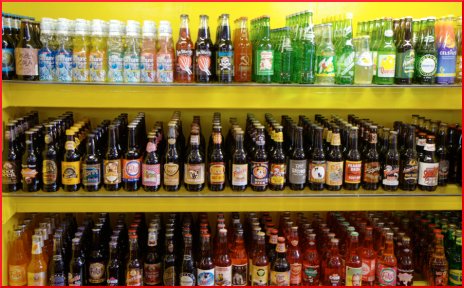
Is high fructose corn syrup (HFCS) the devil’s candy? Many people believe the answer is yes, and the main reasons are mentioned in the unsigned article where Childhood Obesity News first encountered that ominous nickname. First of all, HFCS is found in more different foods than a person might imagine, and often we don’t even know it’s there, because it might appear under a different name.
And even its real name is a lie. High fructose corn syrup doesn’t start out that way, it starts out with fructose and glucose at about half-and-half. The end product, HFCS55, which is used in soda pop, is 55% fructose. A mere 5% increase fructose potency doesn’t seem like much, does it?
The name matters in another way to. Most people, if they think about it at all, will automatically connect “fructose” with fruit. Therefore, it must be good for you. As an old song put it, “It ain’t necessarily so.”
HFCS is highly industrialized, more like food torture than food production. Enzymes are added, to convert most of the glucose into fructose. The resulting goop starts out very strong, as HFCS90, which means almost all-fructose — but then, it’s reblended to bring the percentage down to whatever level a particular facet of the industry requires for its own brand of junk food.
Basically, what comes out is a sweeter concentrate. Just as cocaine is easier than marijuana to move around, which led to its rise, HFCS is more economically transported than sugar. So it is cheaper for the manufacturer, and thus for the consumer — at least temporarily, until the medical bills come rolling in.
When HFCS started to be widely used, Type 2 diabetes and a whole lot of other conditions took a turn for the worse. It doesn’t do your liver any favors, or your heart either. If you ate only fructose or only glucose, the all-fructose died would be worse for you. The writer says:
The syrup also has been shown to interfere with people’s metabolism so that a person feels hungrier than they really are. This is because high fructose corn syrup also limits the secretion of leptin into the body’s system. Leptin is a hormone that signals to the brain when you are full and, without it, the amount of food you consume is not controlled. In parallel to this, the manufactured sweetener also encourages the production of ghrelin, a hormone responsible for controlling appetite, sending your appetite into over-drive.
The picture on this page is from a store called The Soda Gallery in Dallas. The photographer says:
Most of these are even made with real sugar. The even have Coke and Dr. Pepper made with real sugar instead of the modern HFCS sweetened stuff.
Oh, really? Like that’s so much better? Anyway, the unnamed writer we started with points out also that when genetically modified enzymes are added to genetically modified corn, a person who is anti-GMO will want to stay away from it.
And there is, apparently, the mercury. Doesn’t this sound appetizing? Read on:
According to one theory, caustic soda produced in industrial chlorine plants can be contaminated with mercury, then passed on to the high fructose corn syrup and those who eat it. Mercury is toxic in all its forms. Given how much high-fructose corn syrup is consumed by children on ice cream and pancakes, it could be a significant source of mercury never before considered.
This episode of Childhood Obesity News ends with a cliffhanger. Next, a journey through the past couple of years in the life of HFCS. What has happened with these issues?
Your responses and feedback are welcome!
Source: “Guess what’s lurking in your food,” HighFructoseCornSyrup.org, 02/23/09
Image by Steve Rainwater (steevithak).

 FAQs and Media Requests:
FAQs and Media Requests: 











